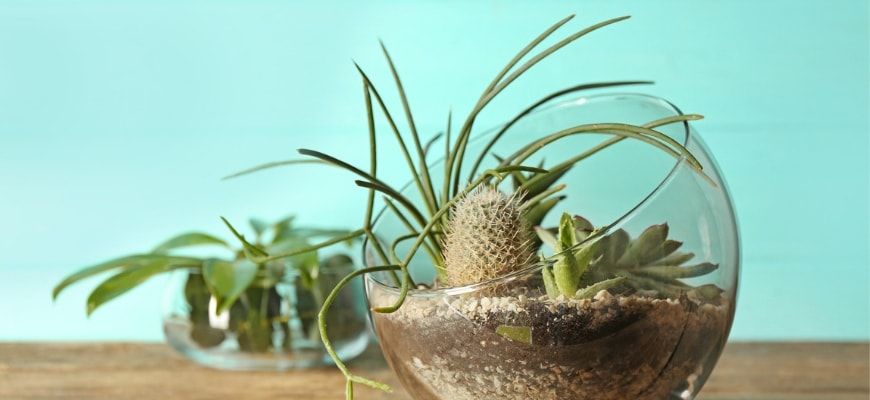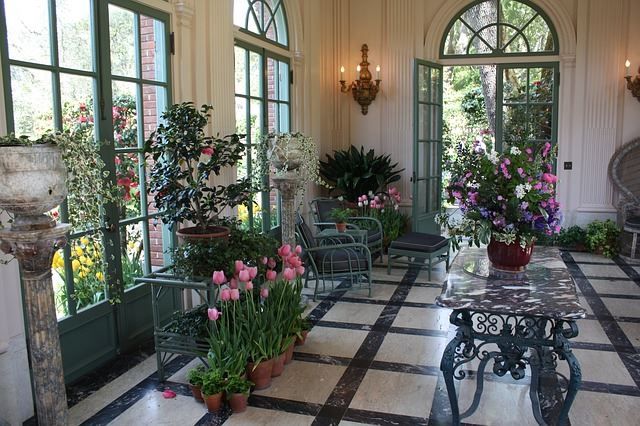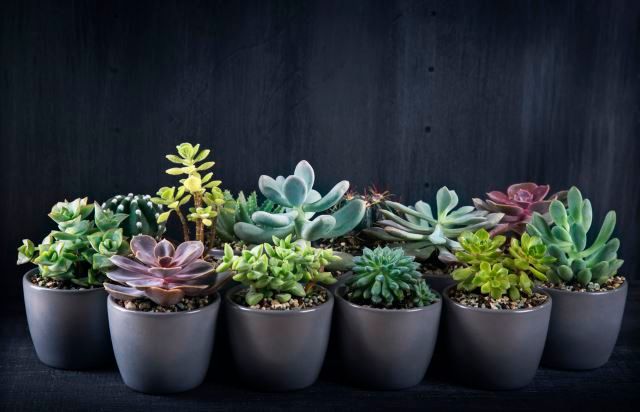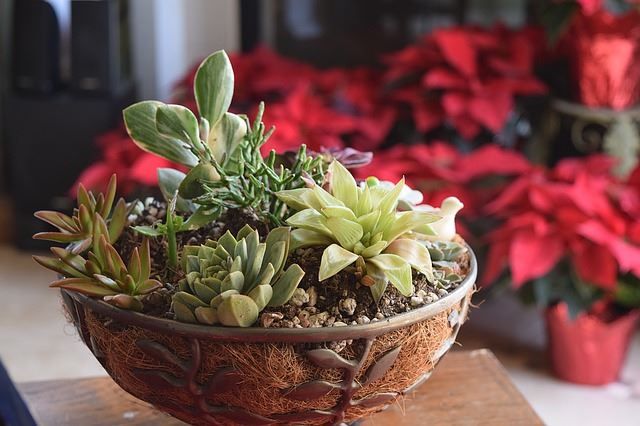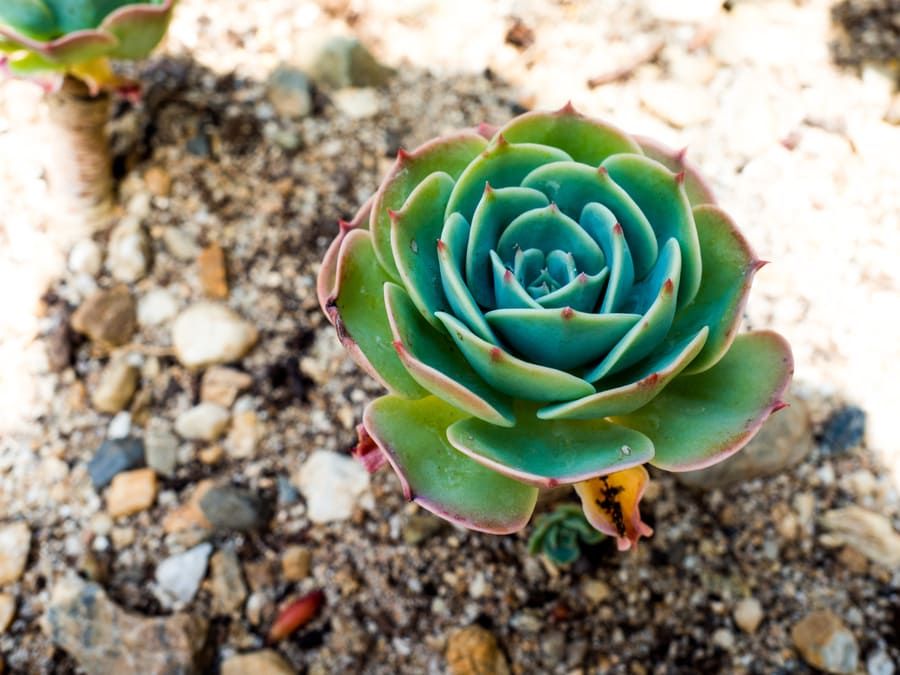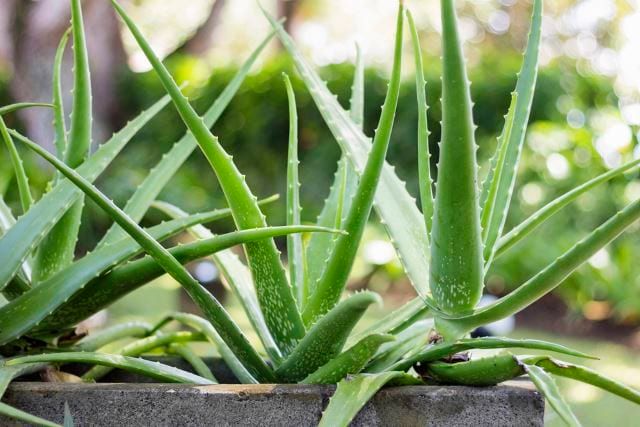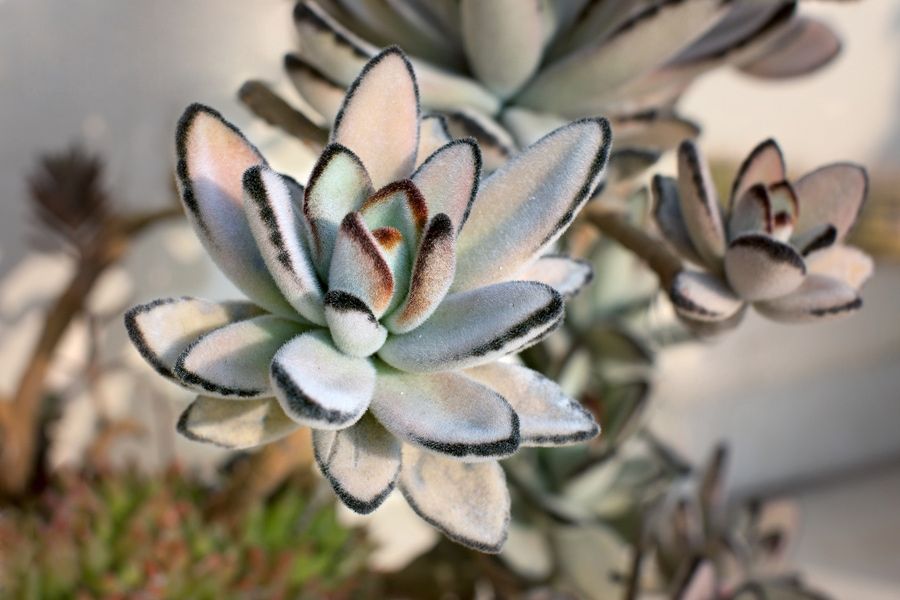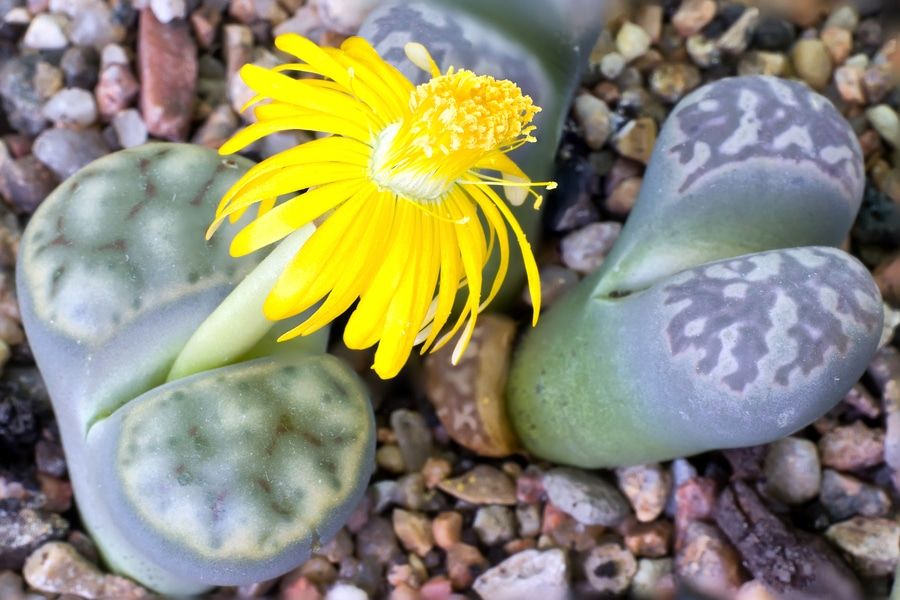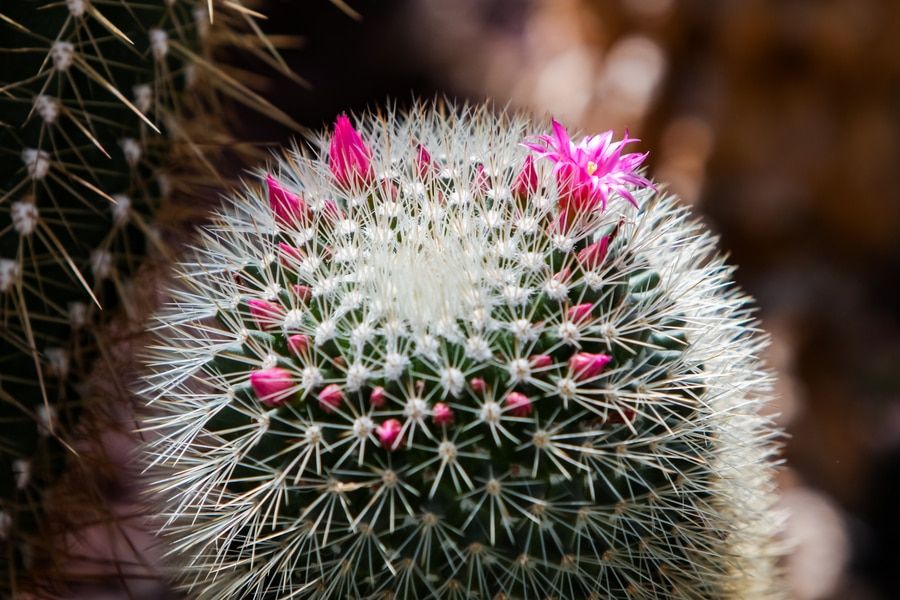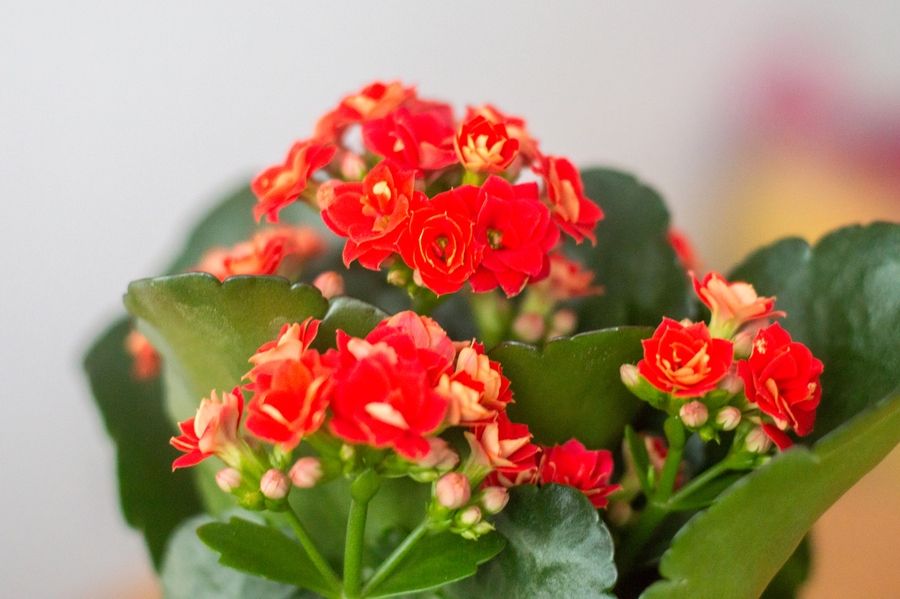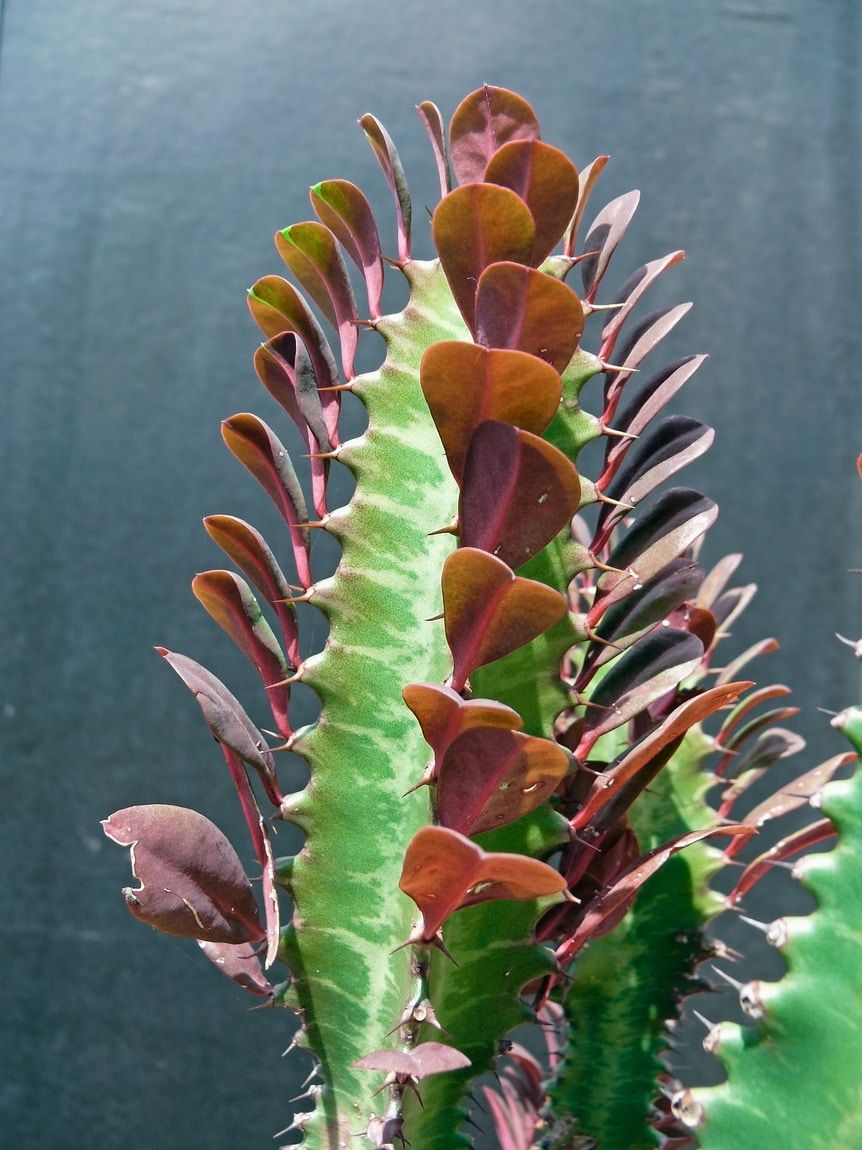Succulents have long been a favorite plant for a wide variety of uses. Their hardy, forgiving nature allows them to flourish in many climates, and their unique colors and shapes add texture and interest to floral arrangements. Although slow growing, they are easy to grow and care for, and are an ideal choice for indoor growing spaces.
The best succulents you can grow indoors is widely varied in option. Choose from trailing stems, upright and reaching pillars, or clustered and compact fleshy leaves in interesting shapes and colors to accent established gardens or on their own. The following guide provides tips to care for your succulents, as well as which ones will thrive best under your attention.
Benefits of Indoor Plants
Having a variety of plants placed throughout your home is not only visually appealing, it is also good for your mental and physical health. Many people are not aware of these many benefits and avoid having houseplants because of their concerns about care. Luckily, most houseplants are easy to keep and are well worth the time they take to occasionally water and repot every so often.
Air Purification
Plants don’t only produce oxygen by recycling the carbon dioxide we exhale through photosynthesis, they also help purify the air from harmful chemicals. Most man-made products you own put out some sort of chemical into the air. These are in such low amounts, and since air is generally circulated, it is not noticeable. However, they can still be harmful over long periods of time or in very closed spaces. Plants help remove these toxins- formaldehyde and carbon monoxide being two of the most concerning.
Humidity Increase
Plants don’t only expel oxygen; they also expel the water they use. This water releases into the air to help support a more humid environment. This is especially helpful in dry climates, where dry air can irritate the lining of your lungs. This is more soothing to your breathing, your skin, and even can help reduce illnesses.
Lower Stress
The physical health benefits of course help increase your overall well-being which leads to a happier you. But plants also have phytoncides, a chemical released by plants that serve as protection. These also can work upon your own body to boost the immune system and improve your mood.
Improves Focus
Studies have shown that your focus and productivity increases when working in rooms with houseplants as opposed to those that are barren of their presence. Concentration, memory, and a feeling of ease all increase - as well as accuracy in your tasks.
What Defines a Succulent?
Succulents are incredibly diverse. They are a specialized plant that has adapted to many various conditions around the world where collecting moisture is often scarce, creating thick leaves and stems that can store water. The word succulent means tender, or full of juice, hence why these plants bear the name as they are full of the water they store- making their leaves feel thick and sponge-like.
Not only are they defined by thickened, swollen leaves, pads, or stems, they also generally have a shallow, wide-reaching root system to gather up as much moisture as possible when it becomes available. They may have a deep taproot as well for stability. Because of this, they do well in a variety of conditions both indoors and out and are a favorite in planters.
Succulent Growing Habits and Care
Since this article is about growing succulents indoors, that is what the focus of this section will also be about. Succulents that are added to your outdoor planters, or grown in your garden beds, may require some different care. Be sure to care specifically for the type of plant you have and the growing habitat you have it in.
Choose the Best Plant for Indoor Growth
With such a huge variety of succulents available, it isn’t any surprise to discover that some grow better indoors than others. This guide is specifically addressing which plants are best for indoor growth and picking from one of the favorites found below ensures your plant is more likely to thrive than other choices.
Use a Well-Draining Habitat
Succulents are adapted to areas that do not provide a lot of moisture to their roots on a consistent basis. This doesn't mean that they are all desert plants, but they all can survive for periods of time without being watered. This also means they do not do well with ‘wet feet’- a term used to describe when the roots of a plant are exposed to water for long periods of time. Be sure to plant your succulents in a well-drained pot, meaning that after watering the water is allowed to drain away from the roots through the substrate and pot.
Provide Good Lighting
Most succulents are also sun lovers and thrive in bright, sunny conditions. Most homes do not offer full sun conditions, but these plants will still do well if you remember that is what they prefer. Choose bright windows that get sun at least part of the day or bright secondary lighting for the majority of the day. Southern and western facing windows are preferable, but not always necessary. Plus, you can always supplement your plant’s lighting with a grow light if you have poor indoor lighting, and through the winter when light is much dimmer.
Soak and Dry the Root Watering Techniques
As mentioned, these plants don’t enjoy having wet feet. They do, however, require a good amount of moisture when you do water them to better mimic their natural habitats. A soak and dry watering technique work well with these plants and describes the method of watering your plant heavily and then allowing it to dry completely for a few days before watering again.
Fertilize Sparingly
Succulents get most of what they need from the soil, but you can fertilize them once every few months and at the start of a growing season. Adding plant fertilizer to the soil are often too harsh and can cause them to burn so you should consider a compost or manure tea to soak the roots in during a regular watering session. You can make these on your own by soaking compost or dried manure (cows, horses, rabbits, and goat waste are highly nutritious) in water to make a ‘tea’. You also can purchase pre-made made to soak.
Best Succulent Options for Growing Indoors
Overall, succulents adapt well to various environments, making them an ideal indoor plant. Although the above tips are sure to help your plants thrive, don't despair if you feel you do not have a sunny enough place or forget to water your plant on time. These are hardy plants that can survive occasional neglect and less than perfect settings once they acclimate. The following are some of the best you can grow indoors, not only for adaptability- but color and texture interest as well.
Many of the names given these plants are fun and whimsical and describe their shapes and growing habits. Because of this, they may also be known by other names- although most are similar altogether.
1. Christmas Cactus (Schlumbergera x buckleyi)
These easy to grow plants are named such because they begin to bloom when temperatures begin to drop. Because of this special care is required to ensure a healthy bud formation, and slight changes to watering can interrupt this process. They will tolerate drying out, but don’t do it too often as dehydration and watering both will cause buds to drop. It won’t hurt the plant, however, which is pretty cool to look at without the flowers.
Care: Be sure to water these a bit more often, allowing the first few inches to dry out between watering. They also do well in a more indirect sun location- perfect for those homes that do not have a lot of natural lighting. To support bud growth, allow your plant to be exposed to consistent temperatures of around 55 degrees Fahrenheit (placing next to a window through the fall and winter can often do the trick).
2. Hens & Chicks (Echeveria elegans) or (Sempervivum tectorum)
Two variations of succulents share the Hen & Chick title, named so due to a slightly larger, main rosette-like plant having a cluster of identical plants next to it. Their close growing habit makes them perfect for upright ‘wall’ plantings and smaller containers, as well as a low growing complementary plant in potted bouquets.
Care: These like dry soil and should definitely be allowed to dry out between watering. You also can easily propagate them by separating off the ‘chicks’ and potting them. Be sure to avoid scarring the delicate leaves by bumping up against them.
3. Burro’s Tails (Sedum morganianum)
These trailing tendrils are covered in clusters of fat, elongated leaves that can reach up to 3 feet in length. They are delicate and can lose leaves easily when disturbed, and although it won’t hurt the plant they should be placed where they won’t be jostled too often. They look wonderful with other plants that add height to the pot.
Care: Lovers of sun, they prefer a sunny window ledge. If moved outside it is best to keep out of direct sunlight. They may occasionally bloom small pink or red flowers in summer.
4. Jade (Crassula ovata)
Thick stems and red-tinged glossy green leaves define a jade plant which is popular for their upright growth. When cared for properly these can get quite large and may require support due to their top-heaviness. The small root system allows you to keep it in a smaller pot to avoid replanting as it grows, just be sure to keep it well drained as the most common way to kill it is by overwatering.
Care: Obviously, how you water a Jade Plant is important, and allowing it to dry almost completely out is suggested before watering again. It also should be trimmed to stay symmetrical, as one heavy side can cause it to uproot itself over time. Cuttings are easy to propagate as well: simply stick back in the soil!
5. Aloe sp. Variations
There are various types of aloe that you can grow, most of which have medicinal purposes. Aloe vera ( Aloe Barbadensis Miller) is the strongest of those that provide the healing, cooling sap popularly used for skin and beauty purposes. These plants are popular because of their long leaves, many which have spikes and variations of green, blue, and white textures, that grow up and outwards.
Care: Be sure to allow the plant to dry out between watering and never allow them to sit in water. They love direct sunlight and thrive in sunny windows and on summer decks and porches. They also rarely need repotting unless the roots are beginning to make their way out of the pot.
6. Zebra Cactus (Haworthia fasciata)
This little plant grows upwards in clusters of thin, green striped leaves. They take up very little room and requires minimal care. Popular as a stand-alone planting or as a choice to add height to cascading options, it simply requires a well-lit area and a little water every so often.
Care: Transplant into fresh, well-drained substrates every 12 to 24 months and allow to dry out between watering. A good sunny window or an area where constant indirect light is ideal.
7. Crown of Thorns (Euphorbia milii)
This native of Madagascar is loved by gardeners due to its bright blooms that will last year-round if properly cared for. Long, spoon-shaped leaves and clusters of tiny flowers surrounded by bright bracts make them a very attractive choice. They do love the sun and a bright window is probably best to get the most blooms, but they will adapt to lower light if needed. Their sap may cause an allergic skin reaction, so always wash your hands after handling.
Care: Bright sunny window yields the best bracts and blooms, and they love to be watered while flowers are present- allowing only the top few inches to dry between watering. Otherwise, you can allow the top half of the pot to dry. If it dries completely it will lose leaves- which will regrow once you begin to water again.
8. Panda Plant (Kalanchoe tomentosa)
One of many Kalanchoe species, the Panda Plant is popularly grown as a common houseplant due to its unique foliage. The leaves are thick and green and covered in soft, silver hairs. The edges of the leaves are dotted with rust-colored hairs. They can bloom but rarely do indoors.
Care: Medium to bright filtered light is all this plant needs, making it great for brightening up spaces that do not get direct sunlight. Water after the first few inches of soil has dried out.
9. String of Bananas (Senecio radicans)
These trailing succulents look like a string of bananas all tied together, hence their name. They can send out tendrils of more than 6 feet in length, making them an ideal hanging plant. Like other similar succulents, their aesthetics is what makes them popular. If you don’t like the elongated leaf, you can choose from variations (examples below) of the same species.
Care: Allow to dry almost completely out between watering, place in a brightly lit area, and keep it warm to avoid any loss of leaves.
10. Lithops sp.
These small, inconspicuous succulents look like little rocks and are fun additions to your succulent gardens, or even on their own. They are used to hot, dry conditions, and require very little water to thrive and bloom in bright colors each spring.
Care: Mimic their natural habitat as much as possible by placing in a sunny window and keeping it warm. Provide water only after it has dried out and do not water at all during the dormant season. To influence blooms, you can add a little fertilizer once you start watering again.
11. Ponytail Palm (Beaucarnea recurvata)
Although they carry the Palm name and look a bit like a palm tree, these are not palms at all. The swollen base of the trunk is what defines it as a succulent, where it stores moisture. It also is commonly known as Elephant Foot due to the thick bottom. The long leaves have very little surface area to lose moisture from but are a wonderful addition to your indoor garden collection.
Care: A sun and heat lover, place in bright areas (although it will adapt to lower light conditions) and let it stay warm. If it does cool off, water less often- which is already only done after the soil has almost completely dried out. Shallow roots only require a new potting when it gets too top heavy for the container it is in (they can grow up to 20 feet- but are very slow growing).
12. Pincushion Cactus (Mammillaria sp)
There are about 200 different types of Pincushion Cactus, all of which are rounded in shape and smaller in size - which makes them perfect for growing indoors in containers. They even bloom well indoors as long as they have a good amount of sun.
Care: Provide as much light as possible and water after allowing it to dry out. Withhold water in winter as well to help ready it to bloom.
13. Snake Plants (Sansevieria trifasciata)
Incredibly hardy, the snake plant can be practically forgotten about and spring back to life upon watering. Large, long pointed leaves grow upright and can reach up to many feet! Lined in yellow, they are colorful additions that can tolerate almost any light condition- perfect for dark corners that receive very little light.
Care: Despite the fact that they will survive almost any condition and periods of neglect, they will thrive with attention. Water only after it has dried out, remove any dying leaves, and provide a bright sunny area for proliferate growth.
14. String of Pearls (Senecio rowleyanus)
Like a long string of beaded pearls, these plants cascade over their containers and trail around the other plantings you may put them with. The rounded globes vary in size as they grow and can weight down their vine so be careful not to cause them to drop their ‘pearls’ if you brush against them as they become heavy. These are a typical succulent and easy to care for with very little attention.
Care: Allow to dry almost completely out between watering, place in a brightly lit area, and keep it warm to avoid any loss of leaves.
15. Kalanchoe blossfeldiana
Related to the Panda Plant shown above, there are many variations of the Kalanchoe species, all which provide different textures, colors, and growth habitat. This particular choice is a prolific bloomer, making it a very popular choice when grown indoors. Broad leaves support clusters of brightly colored flowers that can bloom year-round with the proper circumstances.
Care: Allow to almost dry out before watering and place in a sunny area to support buds. Also, keep it warm and water a bit more frequently while actively blooming.
16. Pencil Cactus (Euphorbia tirucalli)
This unique plant needs a bit of space to grow as it can get up to 6 feet tall- but it’s open branches and pencil like foliage makes it a very airy and interesting choice. It does need a bright area in order to thrive but is the perfect backdrop to other, smaller plantings.
Care: Lots of indirect sun and a good watering in well-drained soil every few weeks is all it needs. Be sure to replant every few years as it can become rootbound.
17. Star Window Plant (Haworthia cuspidata)
With a growing habit that is a bit like Hens & Chicks (above), the Star Window Plant has a thick, translucent looking skin that showcases the vibrant green veins and flesh within. These are incredibly hardy plants that are hard to damage even if dropped and are easy to grow in most conditions.
Care: With the ability to handle low light, these work wonderfully in darker corners to brighten them up- but will grow more vigorously in bright light. Avoid direct sunlight as it can burn the leaves. Also, be sure to allow it to dry a bit out before watering as well or it will begin to drop its leaves.
18. African Milk Tree (Euphorbia trigona)
Hardy and low maintenance, this is a popular ‘tree-like’ succulent option that can grow quite tall overall for a houseplant (up to 6 feet). It will grow with neglect but thrives and put on height and more of the flat, slender leaves with a bright area. Because it is native to very dry, arid regions, it requires very little in the way of watering.
Care: Provide about an inch of water every week and allow to dry out completely before doing it again. It loves bright areas but can be scorched with direct sunlight.
Conclusion
No green thumb is needed to successfully keep a selection of succulents alive. These unique plants can tolerate most neglect and require little in the way of attention to thrive. Plus, they are an awesome addition to any home due to their texture and jewel-like shapes and colors. Mix and match or plant alone, no matter what you decide to do they will definitely provide interest to any space you place them in.
We’d love to hear which pants are your favorite to grow indoors, and which of our top succulent picks you’ll be adding to your household! As always, please share!

